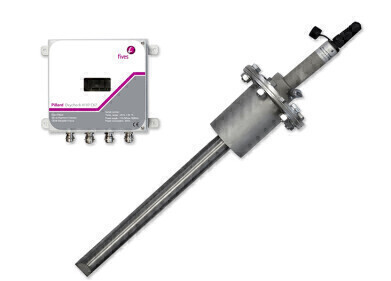Dust monitoring
What Are the Normal Limits for Emissions Monitoring?
Sep 10 2021
Thanks to the implementation of the Industrial Emissions Directive (IED), all power plants, manufacturing sites and other major industrial facilities must now monitor the emissions from their smokestacks using continuous emission monitoring (CEM) equipment. What’s more, they must also take steps to ensure that the concentration of certain pollutants in their emissions does not exceed predefined maximum thresholds.
These thresholds are known as emissions limit values (ELVs) and have been defined by the EU. There are different ELVs from plants of different sizes and they are updated on a regular basis. Even though the UK has subsequently left the EU, it currently still abides by the same regulations as the bloc. Here is a brief explanation of the various ELVs for different pollutants across different sized combustion plants and industrial facilities.
ELVs for large combustion plants
A large combustion plant (LCP) is defined as one which has a thermal input equal to or greater than 50MW. This includes fossil fuel and biomass-powered power plants and oil refineries, among other applications.
|
Pollutant |
Existing plants |
New plants |
||||
|
Solids |
Liquids |
Gases |
Solids |
Liquids |
Gases |
|
|
SO2 |
200 |
200 |
35 |
150 |
150 |
35 |
|
NOx |
200 |
150 |
100 |
150 |
100 |
100 |
|
Dust |
20 |
20 |
5 |
10 |
10 |
5 |
*All values are mg/m3
ELVS for medium combustion plants
A medium combustion plant (MCP) is defined as one which has a thermal input equal to or greater than 1MW and less than 50MW. It too includes the above facilities, as well as manufacturing plants and other industrial sites.
Existing MCPs
|
Pollutant |
Biomass |
Other solids |
Gas oil |
Other liquid |
Natural gas |
Other gases |
|
SO2 |
200 |
400 |
- |
350 |
- |
35 |
|
NOx |
650 |
650 |
200 |
650 |
200 |
250 |
|
Dust |
30 |
30 |
- |
30 |
- |
- |
*All values in mg/Nm3
New MCPs
|
Pollutant |
Biomass |
Other solids |
Gas oil |
Other liquid |
Natural gas |
Other gases |
|
SO2 |
200 |
400 |
- |
350 |
- |
35 |
|
NOx |
300 |
300 |
200 |
300 |
100 |
200 |
|
Dust |
20 |
20 |
- |
20 |
- |
- |
*All values in mg/Nm3
Complying with the new limits
As you can see, the limits of sulphur dioxide have not been updated for new MCPs compared to existing ones, while there have been minimal changes for LCPs, too. However, the ELVs for nitrogen oxides and dust have both been amended more dramatically, which might pose problem for plant owners looking to build new facilities in the future.
If you are affected by the latest amendments to the IED, it’s advisable to incorporate comprehensive monitoring systems and optimisation technology into your plant’s functioning. This will not only help you to save resources and reduce energy consumption, but also curb the emissions from your smokestacks. To learn more about how such technology and processes can help you, please view the informative talk Achieve New Emissions Limits by Taking Control of Your Processes.
Digital Edition
AET 28.4 Oct/Nov 2024
November 2024
Gas Detection - Go from lagging to leading: why investment in gas detection makes sense Air Monitoring - Swirl and vortex meters will aid green hydrogen production - Beyond the Stack: Emi...
View all digital editions
Events
Jan 12 2025 Abu Dhabi, UAE
Jan 14 2025 Abu Dhabi, UAE
Jan 20 2025 San Diego, CA, USA
Carrefour des Gestions Locales de L'eau
Jan 22 2025 Rennes, France
Safety, Health & Wellbeing LIVE
Jan 22 2025 Manchester, UK
.jpg)


















